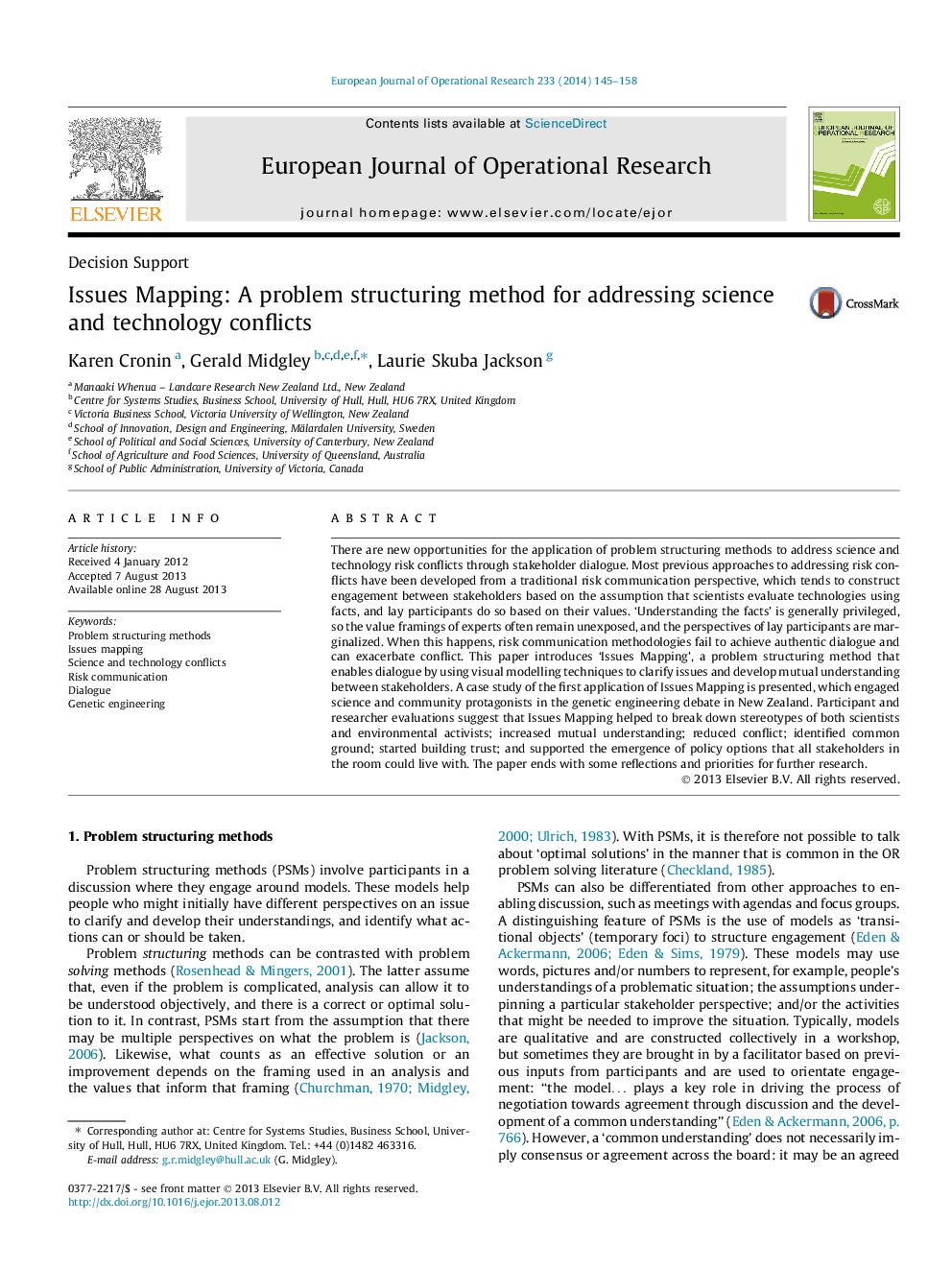| کد مقاله | کد نشریه | سال انتشار | مقاله انگلیسی | نسخه تمام متن |
|---|---|---|---|---|
| 479847 | 1446038 | 2014 | 14 صفحه PDF | دانلود رایگان |
• Issues Mapping and other problem structuring methods (PSMs) can help address science and technology risk conflicts.
• PSMs have advantages over traditional risk communication approaches.
• Issues Mapping is applied to the genetic engineering controversy in New Zealand.
• Participant and researcher evaluations of Issues Mapping are discussed.
There are new opportunities for the application of problem structuring methods to address science and technology risk conflicts through stakeholder dialogue. Most previous approaches to addressing risk conflicts have been developed from a traditional risk communication perspective, which tends to construct engagement between stakeholders based on the assumption that scientists evaluate technologies using facts, and lay participants do so based on their values. ‘Understanding the facts’ is generally privileged, so the value framings of experts often remain unexposed, and the perspectives of lay participants are marginalized. When this happens, risk communication methodologies fail to achieve authentic dialogue and can exacerbate conflict. This paper introduces ‘Issues Mapping’, a problem structuring method that enables dialogue by using visual modelling techniques to clarify issues and develop mutual understanding between stakeholders. A case study of the first application of Issues Mapping is presented, which engaged science and community protagonists in the genetic engineering debate in New Zealand. Participant and researcher evaluations suggest that Issues Mapping helped to break down stereotypes of both scientists and environmental activists; increased mutual understanding; reduced conflict; identified common ground; started building trust; and supported the emergence of policy options that all stakeholders in the room could live with. The paper ends with some reflections and priorities for further research.
Journal: European Journal of Operational Research - Volume 233, Issue 1, 16 February 2014, Pages 145–158
